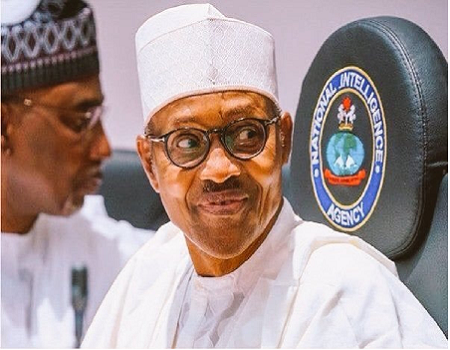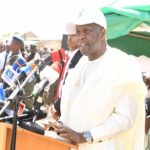With concerns on the growing debt profile of Nigerian government and the new $30 billion loan request sitting before the senate, the presidency has revealed that recent loans the country had taken are more of low-interest loans.
It was also revealed that with president Muhammadu Buhari-led government’s “debt restructuring programme”, it has been able to save the country more funds, as the domestic borrowing, which has a higher interest rate, has been jettisoned for external borrowing.
These were stated by Ajuri Ngelale, Senior Special Assistant (SAA) to the President on public affairs, on his twitter handle, in reaction to a call by BudgIT Nigeria, for Nigerians’ thought on the country’s external debt profile, under the current administration, which has risen by 211 per cent, from $7.34 billion in June 2015 to $22 billion as of June 2019, in the face of the new loan request.
ALSO READ: Gov Inuwa Yahaya flags off CBN’s account opening week in Gombe
He described those engaging in the narrative as “proponents of false debt crisis narrative,” accusing them of not letting Nigerians see the full picture and the progress the government has made with its new loan structure and its attendant benefits to the country.
“Also note that proponents of the false ‘debt crisis’ narrative try to fool us with an emphasis on external borrowing rather than the total public debt which encompasses all. Please note how president Mohammadu Buhari has restructured Nigeria’s debt.
“External borrowing offers loan terms which come with longer tenors and average interest rates of between (2 percent – 9 percent) domestic borrowing tend to offer less favourable terms with much higher interest rates (13 per cent – 24 per cent) more domestic borrowing means higher debt service payments, the SSA said.
He further stated that President Buhari inherited a high debt ratio when he assumed office in 2015, and has, subsequently, reduced the radio to figures, which according to him, are more favourable.
“In 2015, president Buhari inherited a total debt ratio of 86 percent (domestic – high interest) to 14 per cent (external – lower interest). A huge majority of the debt was high-interest debt with higher repayment. 86 per cent-14 per cent. He then strategically took out more low interest, external debt to replace high-interest domestic borrowing to bring down the servicing costs of our national debt, including the $67 billion taken out before him. Our restructured debt ratio under President Buhari is now 68 per cent (high-interest domestic debt) to 32 per cent (lower interest external debt).
“Therefore, external borrowing has gone up because it comes with more favourable terms for project-tied loans and also saves us money in debt servicing payments through Buhari’s landmark debt restructuring program”, he remarked.
Meanwhile, Nigerian Tribune independently confirmed from Debt Management Office (DMO), that the country’s external debt, as stated by BudgIT Nigeria, as of June 2019, stood at $22 billion, while the domestic debt stood at $43 billion (federal government only).
The $30 billion loan request, which, according to the Federal Government, is to finance critical projects across all sectors of the country in agriculture, health, education, water supply, growth and employment generation was presented to the Senate last Thursday.
Interestingly, this is the loan request’s second berth at the red chambers, coming barely a day after the International Monetary Fund (IMF), warned the country of its rising debt profile. It was rejected in October 2016 by the majority of both Senators and House of Representatives members.
In the new request, President Buhari stated, “pursuant to Section 21 and 27 of the Debt Management Office (Establishment) Act, I hereby request for resolutions of the Senate to approve the federal government’s 2016 – 2018 External Borrowing plan, as well as relevant projects under this plan. Specifically, the Senate is invited to note that: While I had transmitted the 2016-2018 External Borrowing Plan to the 8th National Assembly in September 2016, this plan was not approved in its entirety by the Legislature.”
WATCH TOP VIDEOS FROM NIGERIAN TRIBUNE TV
- Let’s Talk About SELF-AWARENESS
- Is Your Confidence Mistaken for Pride? Let’s talk about it
- Is Etiquette About Perfection…Or Just Not Being Rude?
- Top Psychologist Reveal 3 Signs You’re Struggling With Imposter Syndrome
- Do You Pick Up Work-Related Calls at Midnight or Never? Let’s Talk About Boundaries






